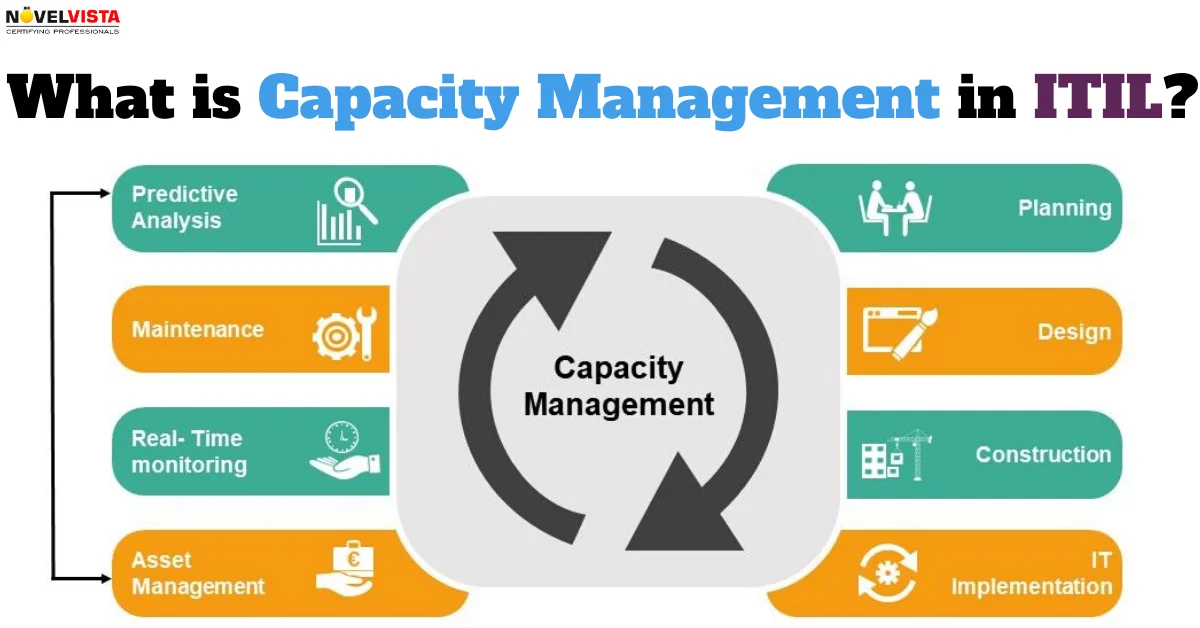Enroll Now and Get Upto 30% Off
* Your personal details are for internal use only and will remain confidential.

Last updated 23/05/2023

Capacity management is the practice of right-sizing IT resources to meet current and future needs. It’s also one of five areas of ITIL Service Delivery.
Effective capacity management is proactive, not reactive. Those doing well at capacity management make sure that business and service needs are met with a minimum of IT resources.
There are many IT tasks that fall under the umbrella of a capacity management process. Here are some of them:
As with all major projects, proper planning is key. If you’re looking to get your project off the ground, here are the five steps you should take. To plan for where your capacity is going, you need to know where you’re at. That’s why it’s important to identify a capacity manager and form a capacity management team.
Capacity management is critical to keeping IT costs down and quality of service up.
Capacity management teams also have close ties to ITIL service level management and financial management areas.
In fact, capacity management processes lead to a more thorough service level and associated financial information for the business. And this helps business leaders make more informed decisions.
Capacity management is often the starting point for an ITIL Service Delivery initiative.
Here’s why. It offers quick, early wins. And these typically create enough cost savings to fund the remainder of your ITIL project. In our experience, such savings are typically in the millions of dollars.
Plus, recovering implementation costs and showing success keeps the project afloat. (This also encourages upper management to stay the course and reduces resistance in your organization.)
The summary explores the key components of Capacity Management, including demand management, performance monitoring, and resource forecasting. It emphasizes the importance of aligning capacity with business needs and outlines the benefits of effective Capacity Management, such as improved service performance, cost optimization, and enhanced customer satisfaction.
The blog also sheds light on the IT Infrastructure Library (ITIL) framework and its relevance to Capacity Management. It explains how ITIL provides a structured approach to Capacity Management, offering guidelines, processes, and best practices for effective resource planning and allocation.
Furthermore, the blog highlights the practical aspects of Capacity Management, discussing activities like workload analysis, capacity modeling, and proactive monitoring. It emphasizes the need for continuous evaluation and adjustment of capacity to ensure optimal performance and scalability in dynamic IT environments.
NovelVista Learning Solutions is a professionally managed training organization with specialization in certification courses. The core management team consists of highly qualified professionals with vast industry experience. NovelVista is an Accredited Training Organization (ATO) to conduct all levels of ITIL Courses. We also conduct training on DevOps, AWS Solution Architect associate, Prince2, MSP, CSM, Cloud Computing, Apache Hadoop, Six Sigma, ISO 20000/27000 & Agile Methodologies.
* Your personal details are for internal use only and will remain confidential.